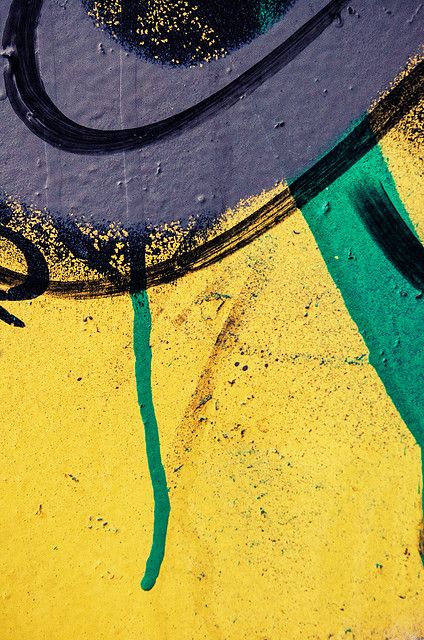Thank you Asher. You have a wonderful way of articulating your feedback. I haven't met too many people who actually go into the context and stories behind images. That's one thing that frustrates me about Flickr. Even in the most revered critique groups, you get technical feedback and that's basically just it. I appreciate your insight and genuine interest in discussing about vision behind the photographs.
We want to encourage folk to look around when on their own path in life!
I have never felt comfortable photographing people. There's something internal that keeps me from pointing the camera to someone's face. I am one of those who feel awkward in the company of a stranger and perhaps that's what led me to photograph abstract and non-people images.
Then photograph the environment that happens to contain people, but do it from across the street. That way, you get the neighborhood and the denizens who pass through. You do not need to point your camera at people, just frame the scene well and let folk come in and leave without bothering too much. Eventually you will have caught a great step, a commanding expression or a mother schlepping her unwilling child. I sometimes buy a coffee, park myself at an outside table and aim for a pedestrian crossing. It's a matter of practice.
Some photographers, such as Antonio Correia, get to know their human subjects and arrange a studio portrait. Tom dinning might just wander around a favorite locale and shoot what's interesting, but without necessarily explaining to anyone what on earth he's aiming for. James Lemon does both. He takes pictures of someone that looks interesting but he will more often stop them and get their nod of consent. Fahim Mohammed, OTOH, is a social being who engages with the folk he meets and bonds with them. Robert Watcher even returns to give them prints!
I once chose a place in a outside café ing Budapest adjacent to the path folk walk on the Buda side of the river and framed one low lying area on the ground, catching just the feet and shadows. I can do the same just aiming somewhere off the axis to faces. You see, just pointing the lens away from people, means that even if they see the camera, it is not pointing at their actual face. So if you aim for a tree at the same distance to the oncoming flow of people, then they will feel comfortable as you have not inserted your camera into
their own frame of reference. For this, a 35mm or 24 mm lens is perfect if you are 3-6 meters away. For longer distances, a 50-100 mm lens might be better. You will never be comfortable until you prove to yourself that you can do this without others being impacted in anyway.
The great advantage of not stopping the person and posing them is that they are images as they really are when they are in their own world. When one greets them, one has a shot of their social expressions and that is entirely constructed. Not worse, but very different.
There definitely is a lot of potential to photograph various things in this neighborhood. Its interesting when you mentioned to touch upon characters in this neighborhood and their pain and joys of life. I have actually been compiling images from the same neighborhood for another series titled "Creatures of Decay". This series does have characters but they are the faces you find in decay on walls. They are the characters that exhibit my internal dilemmas and speak in a visual language about emotions I feel. I will share that series in a separate thread.
In mining for gold, one takes the nuggets of all shapes and sizes! Shooting in a neighbor hood you can specialize in one aspect, of course. But here there are such abundance of riches, you can gather such a lot on all the aspects and make a very interesting and worthy commentary ....and perhaps an enticing exhibition or book.
Asher
BTW, notice I have centered your pictures. In a gallery, they never place all the pictures to the left side of the wall. Photographs seem more important by having white space all around them. So if you think I am correct, consider following suit. 












